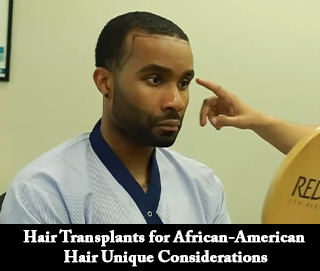Hair Transplants for African-American Hair: Unique Considerations

At DHI India, we understand that each individual’s hair is unique, especially for African-American hair. Over the years, we’ve witnessed the transformative power of hair transplants for people of African descent.
In this comprehensive guide, we’ll delve into the specifics of African hair transplants and African-American hair transplants, discussing everything from suitable techniques to post-transplant care. We will explicitly discuss Afro hair transplants and African-American hair transplants before and after scenarios to offer an in-depth understanding.
So, let’s embark on this journey to explore the world of African-American hair transplantation.
Understanding African-American Hair
African-American hair is beautifully diverse and has unique curl patterns, textures, and thicknesses. It tends to be more delicate and prone to dryness than other hair types, and the curl pattern often forms tight coils or spirals. These factors make African-American hair transplant a specialised field within hair restoration.
Suitable Hair Transplant Techniques for African-American Hair
Direct Hair Implantation (DHITM)
DHI is an advanced technique that offers excellent results for African-American hair transplants. The procedure involves using a specialised implanter pen to insert hair follicles directly into the recipient area, ensuring a natural and dense development. You can see a remarkable African hair transplant case at the link to the DHI case for a detailed example.
Donor Area Considerations
The donor area is crucial for any hair transplant, and for hair transplants for African-American women and men, it requires careful consideration. While the hair at the back of the head is often the primary donor site, assessing the donor’s curl pattern and hair characteristics is important. Matching the donor hair as closely as possible to the recipient area ensures a seamless and natural result.
Managing Keloid Scarring
African-American skin is more prone to keloid scarring, where raised and thickened scars develop at an injury or incision site. To minimise the risk of keloid scarring, we at DHI employ specialised techniques and instruments that minimise tissue trauma during the Afro hair transplant process. Additionally, post-operative care includes recommendations to reduce the risk of keloid formation.
Post-Transplant Hair Care for African-American Hair
After your African-American hair transplant, proper care is essential to maintain and enhance the results.
Here are some essential post-transplant care tips:
Moisturise: African-American hair thrives on moisture. Use sulphate-free and hydrating shampoos and conditioners to keep your hair well-nourished.
Avoid Heat Styling: Limit the use of heat-styling tools like flat irons or curling irons. Excessive heat can cause damage to your newly transplanted hair.
Protective Styles: opt for protective styles like braids or twists that reduce manipulation of the transplanted hair and protect it from environmental damage.
Scalp Care: Maintain a healthy scalp by gently massaging it with natural oils like jojoba or coconut oil. This promotes blood circulation and hair growth.
Regular Follow-ups: Schedule regular follow-up appointments with our clinic to ensure that your transplanted hair grows well and any issues are addressed promptly.
Setting Realistic Expectations for African-American Hair
While hair transplants can be life-changing, it’s essential to have realistic expectations. African-American hair transplantation may require multiple sessions to achieve the desired density, and results may take several months to become fully apparent. Please consult with our experienced team to understand the expected timeline and outcomes specific to your case.
African-American Hair Transplant Cost
The African-American hair transplant cost varies depending on factors like the extent of hair loss, the technique used, and the number of grafts required. Our clinic offers personalised consultations to provide accurate cost estimates tailored to your unique needs.
Conclusion
At DHI, we are committed to helping individuals of African and African-American descent regain their confidence through specialised hair transplantation techniques. African-American hair is beautiful and unique, and our clinic understands the intricacies of working with this hair type to achieve outstanding results.
By choosing suitable techniques, carefully assessing the donor area, managing keloid scarring, and following proper post-transplant care, we can help you achieve natural, healthy, and lasting results. Remember that setting realistic expectations and understanding the process is critical to a successful African-American hair transplant journey.
Contact us for a personalized consultation if you’re considering an African-American hair transplant. Check out some of our successful African-American hair transplants before and after scenarios to stay better informed and equipped. Together, we can embark on a transformative journey to restore your natural beauty and confidence: your hair, your heritage, our expertise – a perfect partnership for a brighter future.
